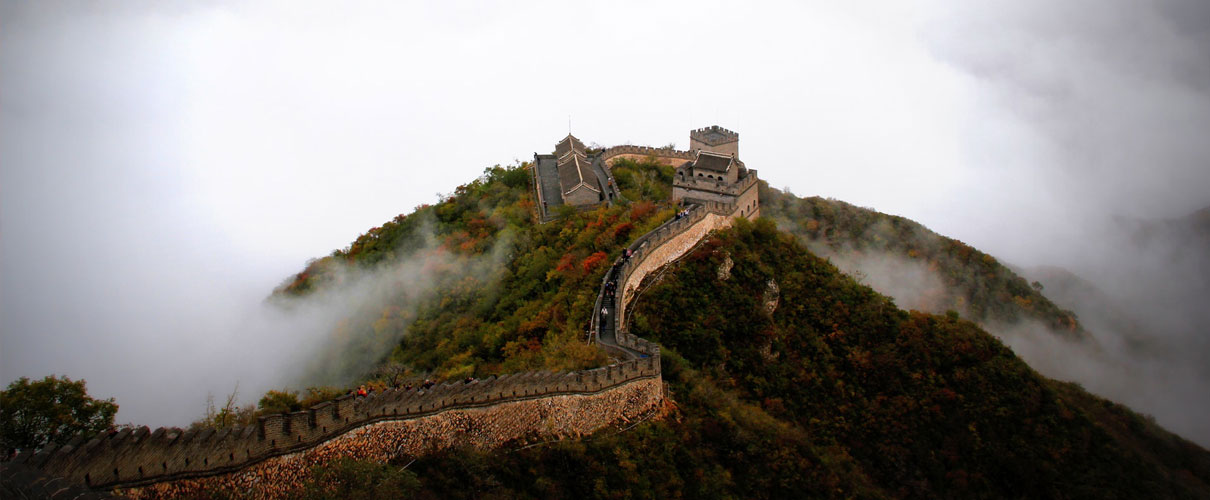
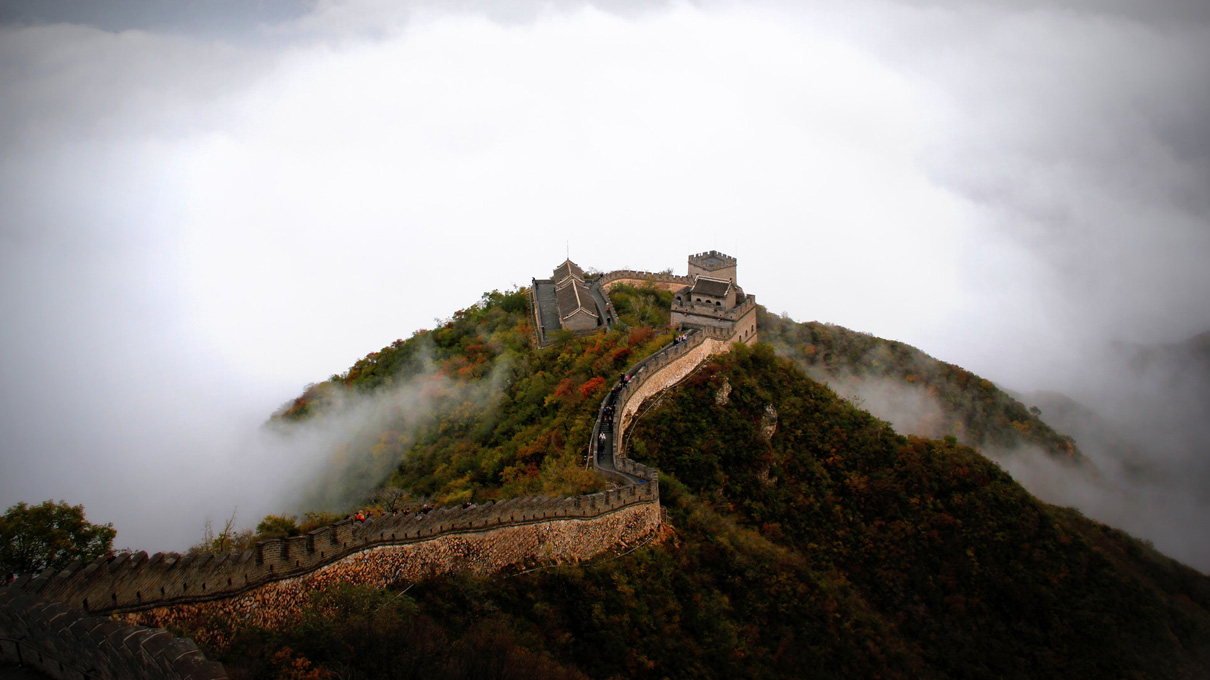
China: A Sustainable Future
This year marks twelve years since the massive “Made in China” scandal, which rightly highlighted the unethical practices multiple multinational companies (MNC) used in their Chinese manufacturing facilities. The scandal showed the ongoing human rights atrocities, as well as shed a light on how much damage unethical production has cause. Nowadays China has been working hard to change its image, moving away from pollution and into clean energy, and a sustainable future.
Often when the phrase “Made in China” is stated, it conjures up images of tired overworked people – adults and children – in large factories, surrounded by endless amounts of work, and pollution [1]. The image churns most people’s stomachs and should horrify anyone who has seen it. Since the mid 2000s China and MNCs who have their production located there, have been marred by scandal after scandal and plagued with the reality that they are a major cause in the rise of pollution worldwide [2], [3]. No industry has escaped these scandals, everything from food [4], [5] and energy [6], to the current pharmaceutical [7], [8] and ongoing fashion scandal [9], [10] have at the very least been complacent in their contribution to the unethical practices in China.
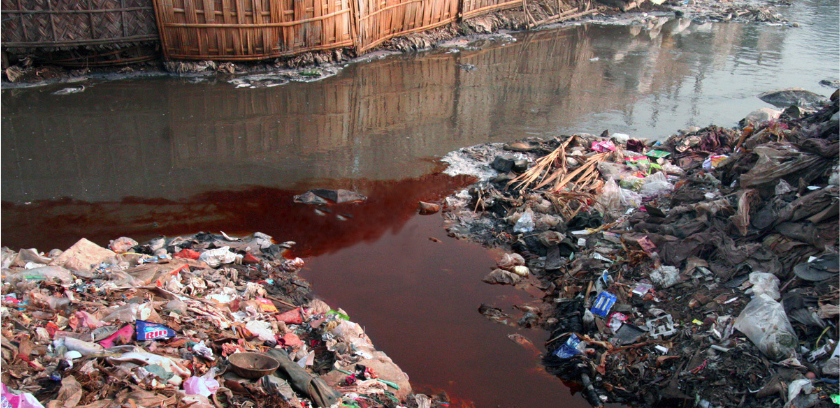
Pollution affecting a Chinese river. Source
On top of all the immoral and corrupt practices, China has had immense issues with pollution. In 2012 news broke on how well-known clothing brands like Zara, Calvin Klein, Puma, and Armani (to name a few) were the main reason behind the detrimental water pollution, which lead to over 2.5 billion gallons of wastewater being dumped in rivers and lakes that many locals depend upon for drinking water [10], [11]. During the summer of 2007 the country’s second largest freshwater lake, Lake Tai, experienced a massive algae bloom causing a water shortage for over three million people [12]. The cause: the surrounding chemical plants which were dumping effluent, into rivers and lake, changing the water color to a milky white or black pigment [13]. Granted manufacturing alone is not to blame for this, as about 90% of all household sewage is still dumped into rivers, and most of the country still depend on coal for heating (in addition to production facilities) [14].
In 2015 a change started; The UN held their summit on Sustainable Development, wherein the 2030 Agenda for Sustainable Development was drafted [15]. China not only agreed to the agenda but was one of the key members in its development [16]. President Xi Jinping has been particularly outspoken on China’s need to build an “Ecological Civilization” noting in his address to the 19th National Congress of the Communist Party of China in 2017 that; “Significant ecological protection and restoration projects are progressing smoothly, and forest coverage continues to increase.” He went on to discuss the role the international commission on climate change had great helped change the Chinese approach to sustainability [17].
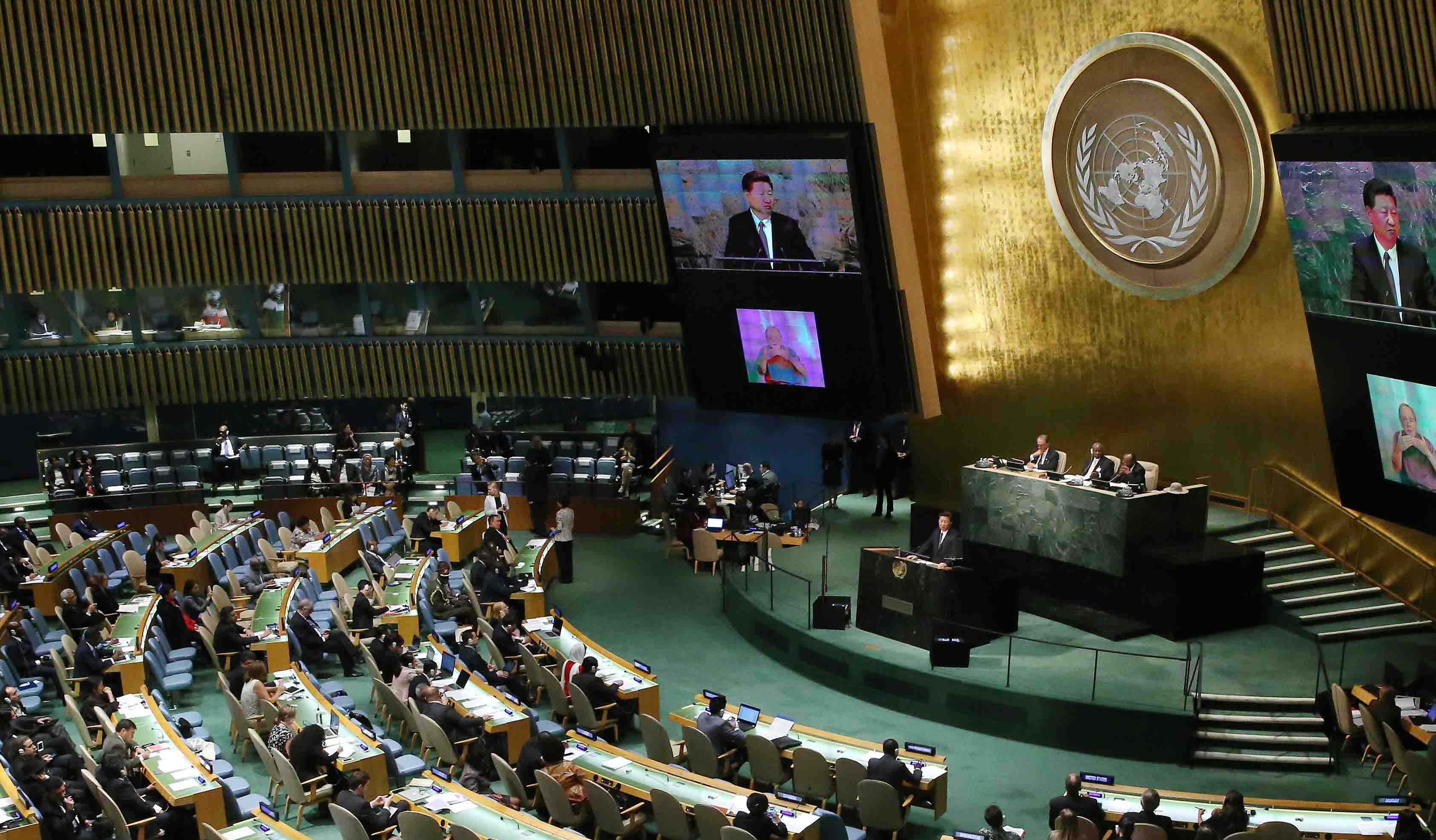
President Xi Jinping Addressing the UN. Source
For Chinese leadership this agreement and desire for a greener future isn’t simply another signature on paper but rather an important shift for the people and economy of the country [30]. They are not just talking about doing something but actually acting on it [16], [22]. Since 2013 half of all additions to its electricity generating capacity have been nuclear or renewable energy, making the country the first in the world for renewable energy installations [18], [19]. The same year they signed the UN agreement, China invested over $100 billion into its renewable energy sector focusing heavily on solar and wind. The country plans to have one-third of all energy be renewable by 2030 [18].
A report in late 2017 from the International Energy Agency noted that China’s dedication to sustainable energy would most likely lead to a faster clean energy transition worldwide [18]. The report also estimated that if China reaches its goal on time it would wipe out about 5.3 billion tons of its carbon emissions [20].
China’s plan for sustainability goes beyond energy and focuses on production as well. Fashion companies are moving away from the fast fashion and focusing on sustainability [21]. These brands include Les Lunes, Grana, Ellie Kai, Everlane, and Caraa, and choose to work with smaller “artisan” factories who hire local, have an above average wage, benefits, and are part of the Sustainable Apparel Coalition to stop environmental damage [22]. The emphasis these brands have on human rights as well as environmental concerns is part of a new wave in production and manufacturing which focuses on being ethical [16], [19].
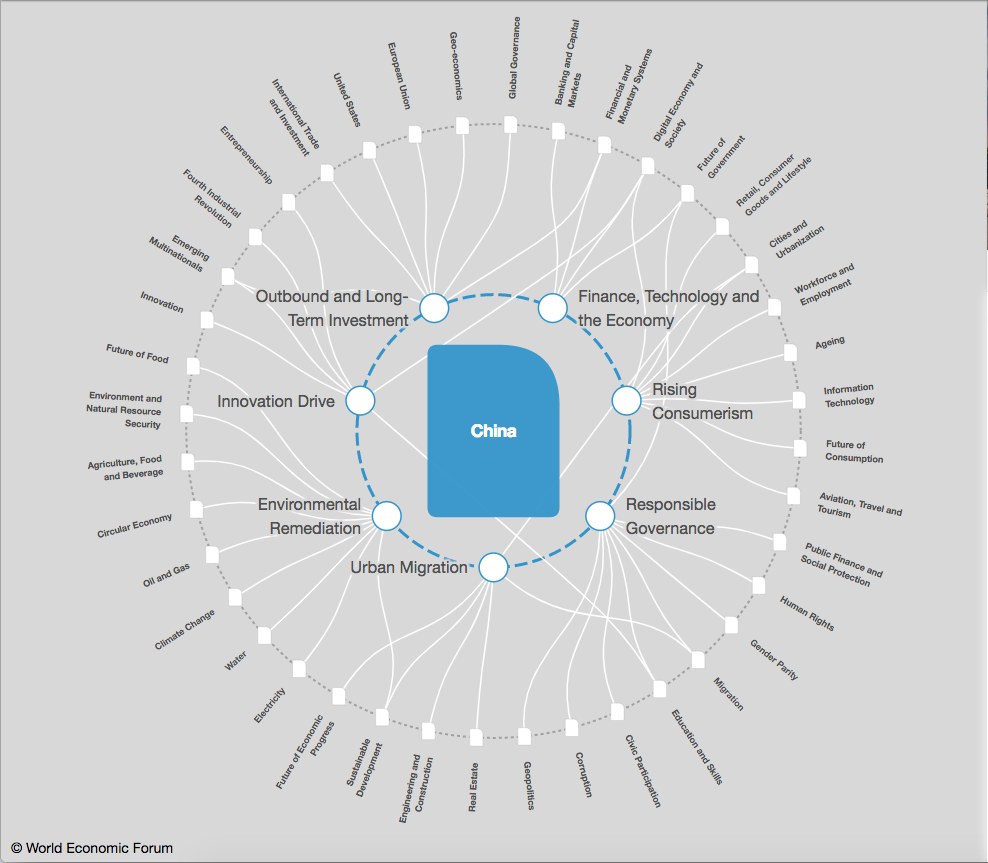
Interactive image from WEF on China’s Sustainability plans. Source
In terms of industrial manufacturing, the top five solar module makers, such as Trina Solar, Yingli Solar, Jinko Solar, Suntech Solar, and JA Solar are owned and operated in China, as well as and the world’s largest wind turbine maker, Goldwind [18], [23], [26]. Additionally, the top six car manufacturers committed to creating only ecological (electric) cars, are Chinese, as well as most of the world’s lithium sector is located there and are committed to creating sustainable batteries and smarter grid investment [20], [24]
Furthermore, China is investing heavily in building ecological cities, which are completely integrated with nature, and self-sufficient, running on renewable energy such as geothermal and solar [25]. Their first “forest-city” began construction last year and is planned to be the prototype for all future cities [26]. The integration with electricity and shrubberies will not only cut carbon emissions but clean up the current issues with the Chinese air.
New environmental regulations are being implemented and enforced in order to cut down on pollution. Beijing, Fuzhou, Qingdao, and Shanghai are an example of this having implemented gas and coal taxes for both individuals and businesses [27]. It is a relatively small tax at $0.47, but any steps in the right direction helps in the long run [28]. Moreover, the country is addressing its human rights issues, by allowing more trade unions, implementing regulations and penalties for foreign MNCs which violate labor laws, and working hard to narrow its income and pay gaps [15]. Both the UN and Human Rights in China (HRIC) are diligent in guiding lawmakers to enforce penalties on violators, and implement more laws protecting workers [15], [29], [30].
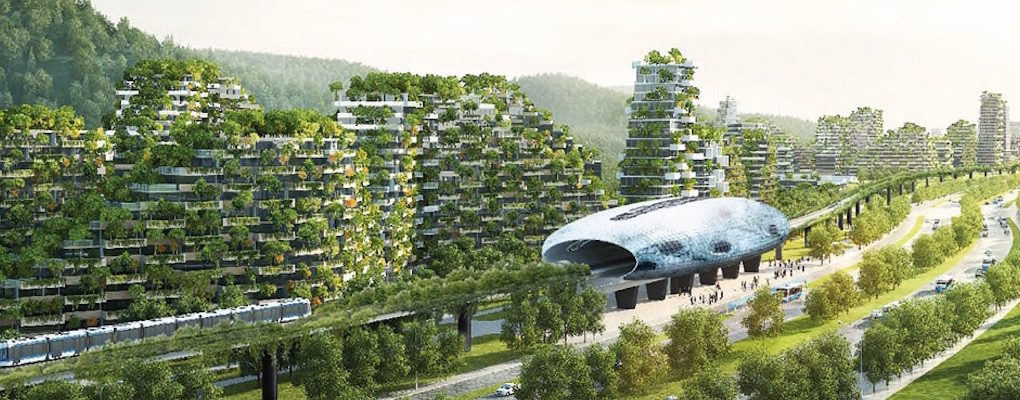
3D model of the planned forest cities in China. Source
There is more than a bit of irony in the idea that one of the world’s worst polluters is now leading the clean energy revolution. However, there are many lessons which can be learned from China’s actions, ranging from understanding the need solve the issues we’ve caused, to remembering every action makes a difference. It is too early to call if China will really be the world’s sustainability leader, but they are doing their best to try [30].
Last Updated: 2018.10.17
[1] The Economist, 2009. “Poorly made” The Economist. [Online] Available at: [LINK]
[2] Watts, 2007. “Made in China: Tainted Food, Fake Drugs, and Dodgy Paint” The Guardian. [Online] Available at: [LINK]
[3] China Labor Watch, 2018. “Reports” China Labor Watch. [Online] Available at: [LINK]
[4] Gale, Dinghuan, 2009.” Supply Chain Issues in China’s Milk Adulteration Incident” International Association of Agricultural Economists. [Online] Available at: [LINK]
[5] Li, 2014. “China's tainted meat scandal explained” CNN. [Online] Available at: [LINK]
[6] McGrath, 2018. “China Coal Power Building Boom Sparks Climate Warning” BBC. [Online] Available at: [LINK]
[7] Westcott, Wang, 2018. “Number of Faulty Children’s Vaccines in China Surges to over 900,000” CNN. [Online] Available at: [LINK]
[8] Hong, Wei, 2018. “How Faulty Vaccines Sparked Consumer Panic in China” Bloomberg. [Online] Available at: [LINK]
[9] Griffths, 2014. “H&M, Zara defend quality control practices after watchdog criticism” South China Morning Post. [Online] Available at: [LINK]
[10] HuffPost, 2012. “Major Retailers Contribute to Severe Water Pollution in China: Report” HuffPost. [Online] Available at: [LINK]
[11] Webber, 2017. “How Fast Fashion Is Killing Rivers Worldwide” Eco Watch. [Online] Available at: [LINK]
[12] Guorui, Hanfu, 2012. “Long struggle for a cleaner Lake Tai” China Dialogue. [Online] Available at: [LINK]
[13] BBC, 2012. “Yangtze River chemical leak raises concern in China” BBC. [Online] Available at: [LINK]
[14] Ma, Adams, 2013. “If You Think China’s Air Is Bad...” New York Times. [Online] Available at: [LINK]
[15] United Nations et. al., 2015 “China’s National Plan on Implementation of the 2030 Agenda for Sustainable Development” United Nations Sustainable Development Summit. [Online] Available at: [LINK]
[16] Aldern, 2017. “If Present Trends Continue, China May Become a Sustainable Development Success Story.” UN Dispatch. [Online] Available at: [LINK]
[17] Xinhua News Agency, 2017. “Xi Jinping's report at the 19th National Congress of the Communist Party of China” China. [Online] Available at: [LINK]
[18] Murtaugh, 2017. “China Is Over Coal, Bored with Oil as it Charts Green Future” Bloomberg. [Online] Available at: [LINK]
[19] Bryan, Gao, 2018. “What we can learn from China’s fight against environmental ruin” The Conversation. [Online] Available at: [LINK]
[20] Pope, 2018. “China wants to dominate the world’s green energy markets – here’s why” The Conversation. [Online] Available at: [LINK]
[21] Segran, 2017. “When “Made in China” Means Sustainable, Ethical, And Expert” Fast Company. [Online] Available at: [LINK]
[22] Song, 2018 “Here's how China is going green” World Economic Forum. [Online] Available at: [LINK]
[23] Liu, 2018. “2018 Top 10 Solar Panel Manufacturers & Companies in China” Tunto Power. [Online] Available at: [LINK]
[24] Zhu, 2017. “The 2030 Agenda for Sustainable Development and China’s implementation”, Chinese Journal of Population Resources and Environment, 15:2, 142-146 [Online] Available at: [LINK]
[25] Lant, 2017. “China Has Officially Started Construction on the World’s First ‘Forest City’“ Futurism. [Online] Available at: [LINK]
[26] UBS, 2018. “You may be surprised at which country is setting an example for the future of sustainable cities” Mashable. [Online] Available at: [LINK]
[27] C40, 2018. “Four Chinese Cities Commit to Slash Emissions from Buildings” C 40. [Online] Available at: [LINK]
[28] Darby, 2017. “China emerges as green reformer in vast petrol tax study” Climate Change News. [Online] Available at: [LINK]
[29] HIRC, 2018. Human Rights in China. [Online] Available at: [LINK]
[30] Wu et. al., 2018. “Economic development and declining vulnerability to climate-related disasters in China” Environ. Res. Lett. 13, 034013 [Online] Available at: [LINK]
[2] Watts, 2007. “Made in China: Tainted Food, Fake Drugs, and Dodgy Paint” The Guardian. [Online] Available at: [LINK]
[3] China Labor Watch, 2018. “Reports” China Labor Watch. [Online] Available at: [LINK]
[4] Gale, Dinghuan, 2009.” Supply Chain Issues in China’s Milk Adulteration Incident” International Association of Agricultural Economists. [Online] Available at: [LINK]
[5] Li, 2014. “China's tainted meat scandal explained” CNN. [Online] Available at: [LINK]
[6] McGrath, 2018. “China Coal Power Building Boom Sparks Climate Warning” BBC. [Online] Available at: [LINK]
[7] Westcott, Wang, 2018. “Number of Faulty Children’s Vaccines in China Surges to over 900,000” CNN. [Online] Available at: [LINK]
[8] Hong, Wei, 2018. “How Faulty Vaccines Sparked Consumer Panic in China” Bloomberg. [Online] Available at: [LINK]
[9] Griffths, 2014. “H&M, Zara defend quality control practices after watchdog criticism” South China Morning Post. [Online] Available at: [LINK]
[10] HuffPost, 2012. “Major Retailers Contribute to Severe Water Pollution in China: Report” HuffPost. [Online] Available at: [LINK]
[11] Webber, 2017. “How Fast Fashion Is Killing Rivers Worldwide” Eco Watch. [Online] Available at: [LINK]
[12] Guorui, Hanfu, 2012. “Long struggle for a cleaner Lake Tai” China Dialogue. [Online] Available at: [LINK]
[13] BBC, 2012. “Yangtze River chemical leak raises concern in China” BBC. [Online] Available at: [LINK]
[14] Ma, Adams, 2013. “If You Think China’s Air Is Bad...” New York Times. [Online] Available at: [LINK]
[15] United Nations et. al., 2015 “China’s National Plan on Implementation of the 2030 Agenda for Sustainable Development” United Nations Sustainable Development Summit. [Online] Available at: [LINK]
[16] Aldern, 2017. “If Present Trends Continue, China May Become a Sustainable Development Success Story.” UN Dispatch. [Online] Available at: [LINK]
[17] Xinhua News Agency, 2017. “Xi Jinping's report at the 19th National Congress of the Communist Party of China” China. [Online] Available at: [LINK]
[18] Murtaugh, 2017. “China Is Over Coal, Bored with Oil as it Charts Green Future” Bloomberg. [Online] Available at: [LINK]
[19] Bryan, Gao, 2018. “What we can learn from China’s fight against environmental ruin” The Conversation. [Online] Available at: [LINK]
[20] Pope, 2018. “China wants to dominate the world’s green energy markets – here’s why” The Conversation. [Online] Available at: [LINK]
[21] Segran, 2017. “When “Made in China” Means Sustainable, Ethical, And Expert” Fast Company. [Online] Available at: [LINK]
[22] Song, 2018 “Here's how China is going green” World Economic Forum. [Online] Available at: [LINK]
[23] Liu, 2018. “2018 Top 10 Solar Panel Manufacturers & Companies in China” Tunto Power. [Online] Available at: [LINK]
[24] Zhu, 2017. “The 2030 Agenda for Sustainable Development and China’s implementation”, Chinese Journal of Population Resources and Environment, 15:2, 142-146 [Online] Available at: [LINK]
[25] Lant, 2017. “China Has Officially Started Construction on the World’s First ‘Forest City’“ Futurism. [Online] Available at: [LINK]
[26] UBS, 2018. “You may be surprised at which country is setting an example for the future of sustainable cities” Mashable. [Online] Available at: [LINK]
[27] C40, 2018. “Four Chinese Cities Commit to Slash Emissions from Buildings” C 40. [Online] Available at: [LINK]
[28] Darby, 2017. “China emerges as green reformer in vast petrol tax study” Climate Change News. [Online] Available at: [LINK]
[29] HIRC, 2018. Human Rights in China. [Online] Available at: [LINK]
[30] Wu et. al., 2018. “Economic development and declining vulnerability to climate-related disasters in China” Environ. Res. Lett. 13, 034013 [Online] Available at: [LINK]

